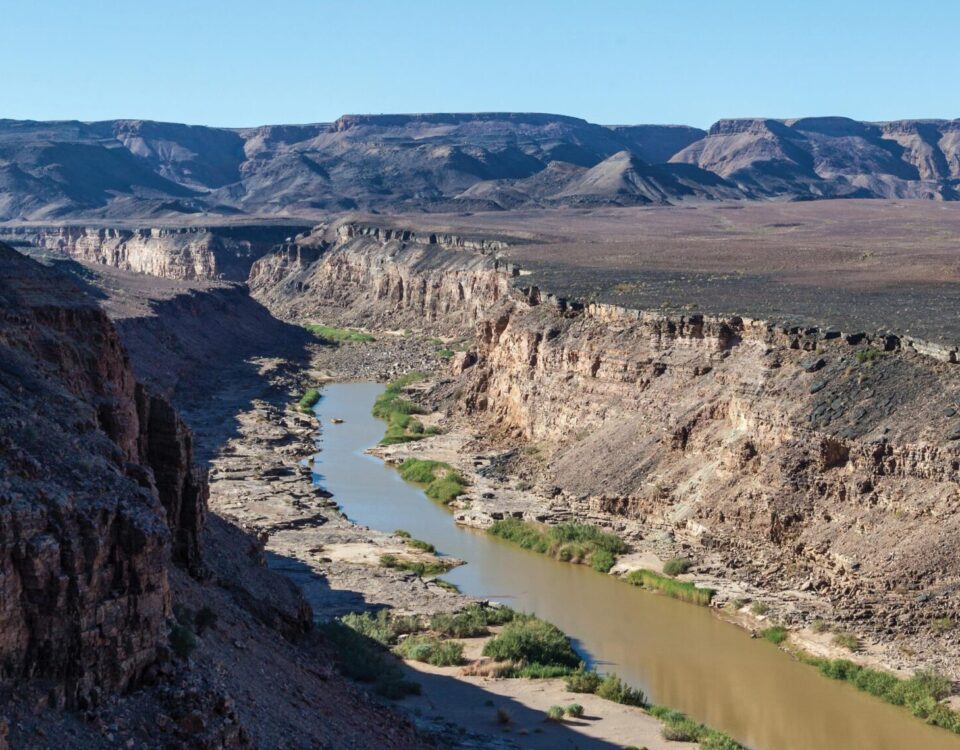The indefatigable commiphoras – hardy, varied, adaptable
November 12, 2012Onguma Tented Camp – the ultimate in safari chic
November 13, 2012by Susann Kinghorn
I have nothing against staying in hotels, guesthouses or lodges, but have you ever been reconnected with nature on an inexpensive camping adventure? It’s pure bliss! Especially if you are camping in Namibia.
Our Swakopmunder travelling group waved goodbye to civilisation as we left the coast in an easterly direction to immerse ourselves in nature. We felt further detached from our so-called cultured lifestyles when the tar under the wheels of our 4x4s made way to a light-brown dirt road just north of Usakos.
Large granite boulders here characterise the landscape. Our destination is Omandumba, a farm situated on the northern side of the majestic Erongo Mountains. After an hour of dusty meandering through bizarre rock formations created by the collapse of a gigantic volcano more than 100 million years ago, we could finally spread out our sleeping bags under the inviting branches of a shepherd’s tree at the camping place of Omandumba, which means ‘place where the bitterbush grows’.
The witgat (Boscia albitrunca) is often called the Tree of Life, as it offers sustenance to both humans and animals. It was definitely a Tree of Life to us by offering us shelter from the scorching sun.
Calmness descended as we sat in the shade of our tree, drank that unique ‘hops juice’ called Hansa Tafel and listened to a myriad of
birds. Since ornithologist Eckart Demasius was in the group, we were soon all bitten by the bird bug. Our eyes were keenly focused on the upper branches as we tried to identify some of the many feathered friends.
Of the 154 different bird species recorded at Omandumba, 60 were identified by our bird experts over the weekend, a remarkably high number for such a dry time of the year. The bird bug had certainly taken me in its grips by the next day. For hours on end I watched and photographed redeyed bulbuls (Pygnonotus nigricans) and pied barbets (Lybius leucomelas) at the camp shower, where they were enjoying the dripping water.
On a sunset walk we saw a group of kudu and a few Damara dik-dik, the smallest antelope in Namibia. Apart from the fading light, and possibly the leopard spoor we’d noticed, it was mainly hunger that drew us back to our cosy camp. Soon our campfire was burning brightly, and the steaks were sizzling in the pan. The surrounding mountains were engulfed in darkness and we brought out a guitar and started strumming. One by one we were joined by other campers from Germany and Austria, as well as by Harald Rust, the owner of this beautiful piece of land.
For those not keen on sharing their sleeping bags with creepy crawlies, there is also a tented camp on Omandumba. For us, though, the magic of camping is lying under the open sky at night and experiencing the vastness of the universe, up close and personal with nature.
 This article was made possible by Cymot Namibia
This article was made possible by Cymot Namibia
This article appeared in the Oct/Nov ‘05 edition of Travel News Namibia.

